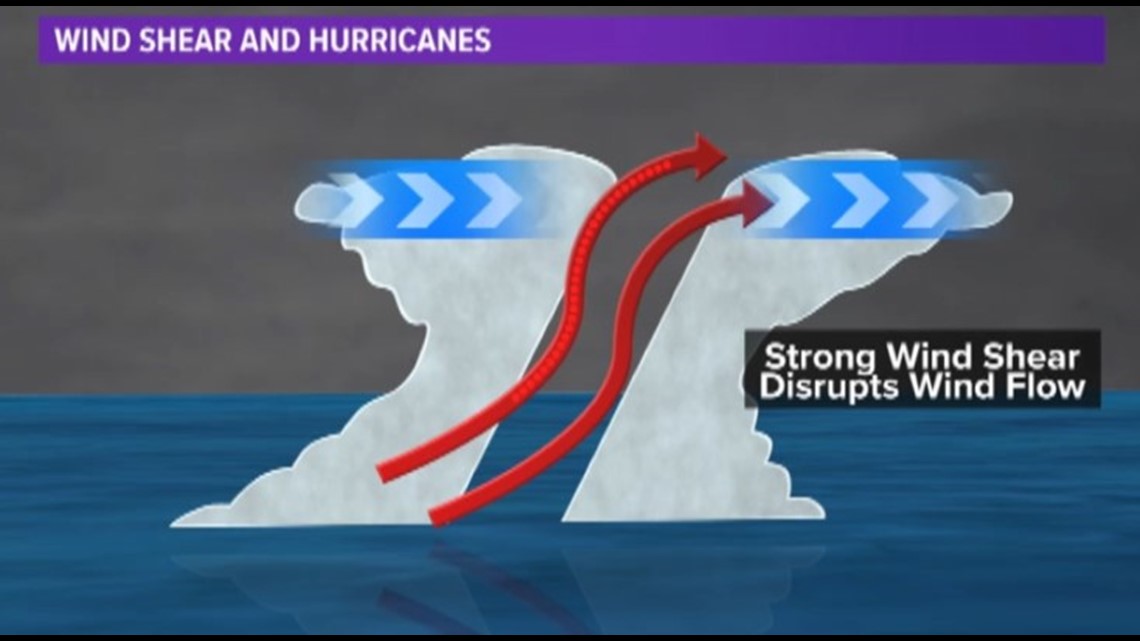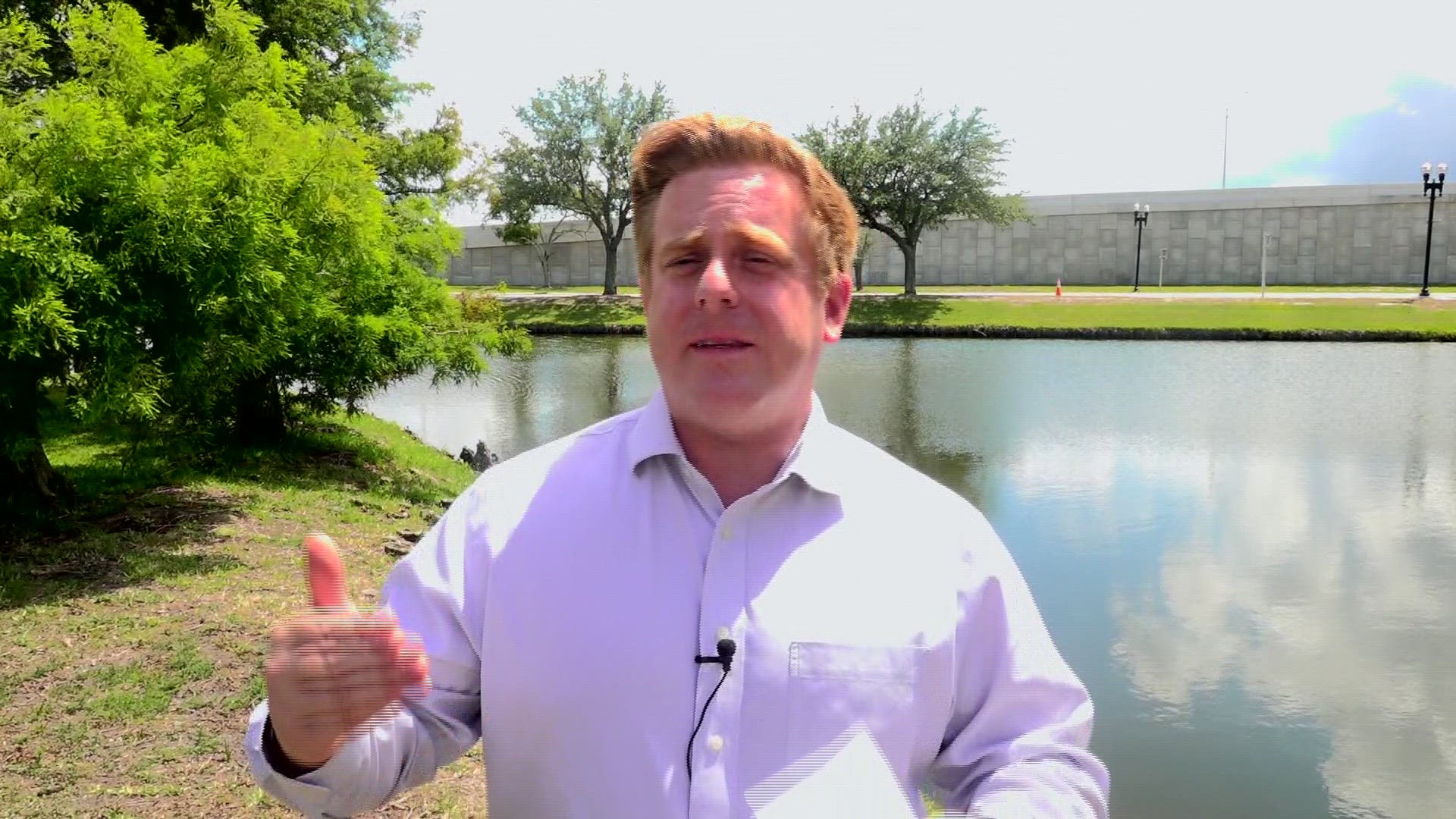JACKSONVILLE, Fla. — With tropical systems we often talk about the impacts of wind shear. Enough of it and a storm can be ripped apart and weaken blowing the top away from the low portion of a storm.
WHAT IS WIND SHEAR?
Basically, wind shear in relation to tropical systems is the difference between the wind speed and direction at the surface compared to that of the upper levels of the atmosphere. For example if the winds near the surface and aloft up to 40,000 ft are close in speed and direction to each other that is a low wind shear environment and tropical systems like that. But if the winds aloft are much higher than that at the surface we get that wind shear which can cause tropical systems to weaken, the graphic below is a representation of this.


Remember that tropical systems are heat engines, the center of the storm is a figurative piston that is powered by the release of latent heat when water vapor turns into liquid water. Wind shear disrupts this heat engine and thus weakens a tropical system.
WHAT IF YOU'RE FORECASTING?
A typical rule is look for winds that are different from the surface up to 40,000ft to be 20 knots or less in the center of the storm, anything more than that a storm will have a hard time developing yet alone intensifying into anything strong.
Now you should know what wind shear is during our tropical updates at First Coast News.

